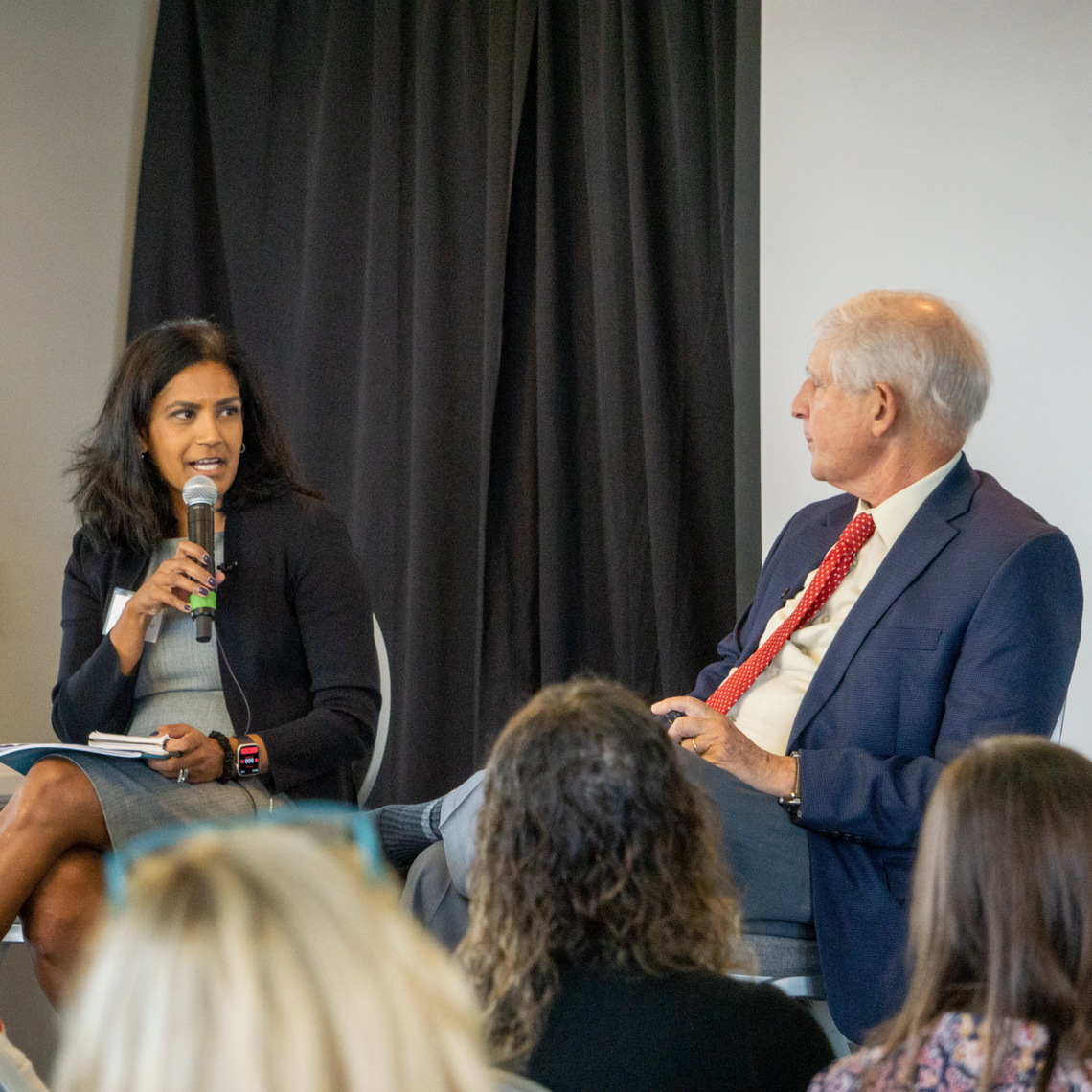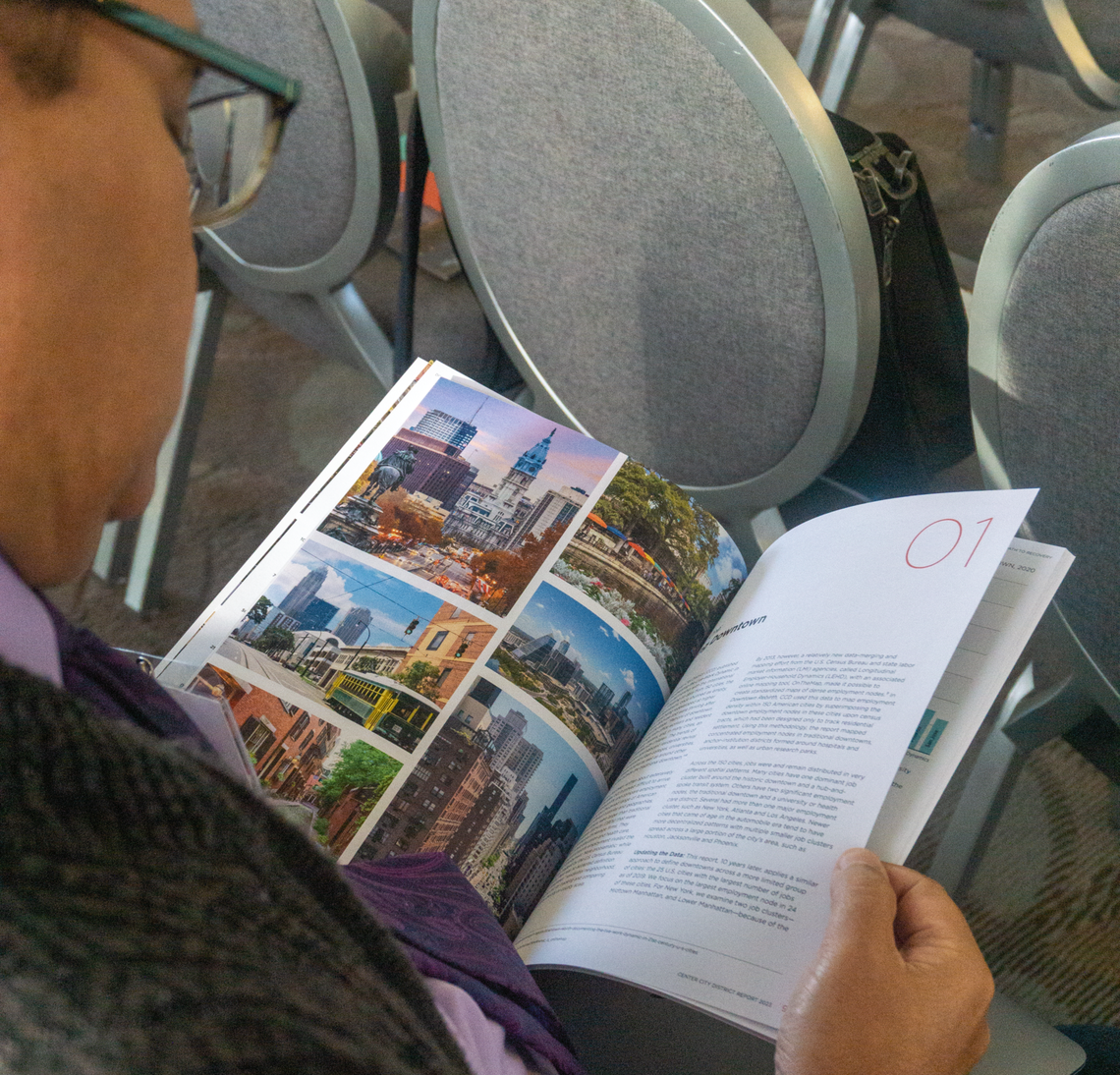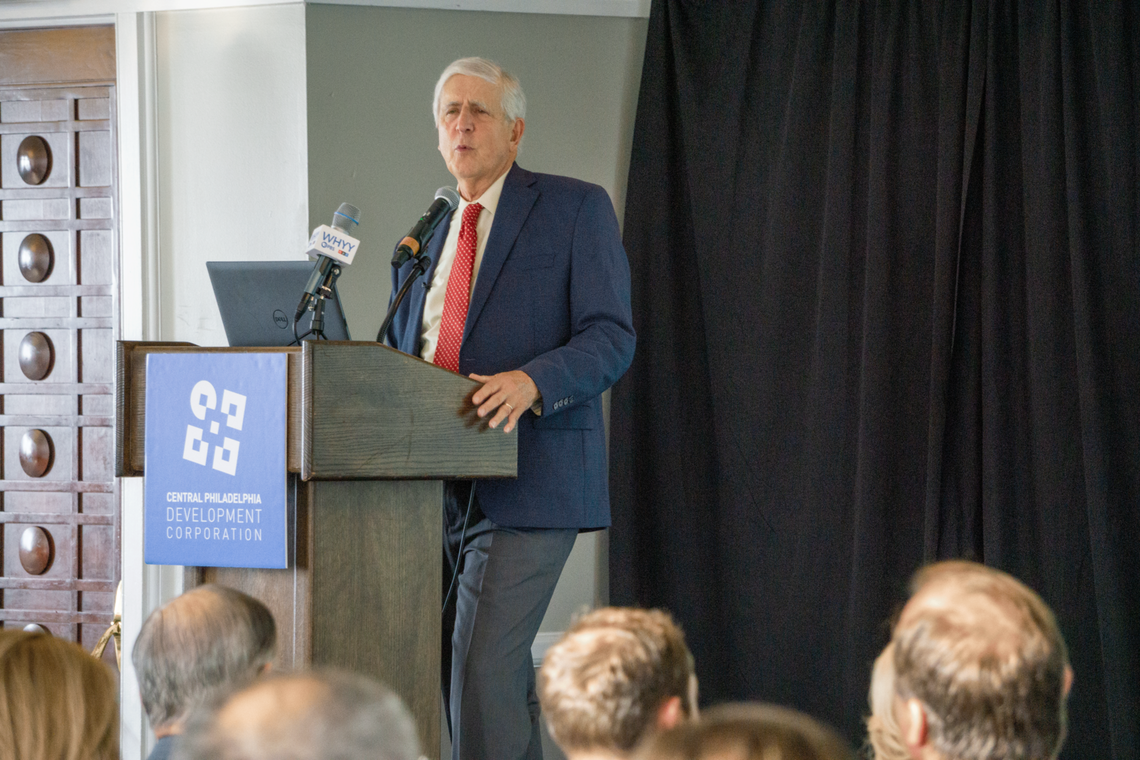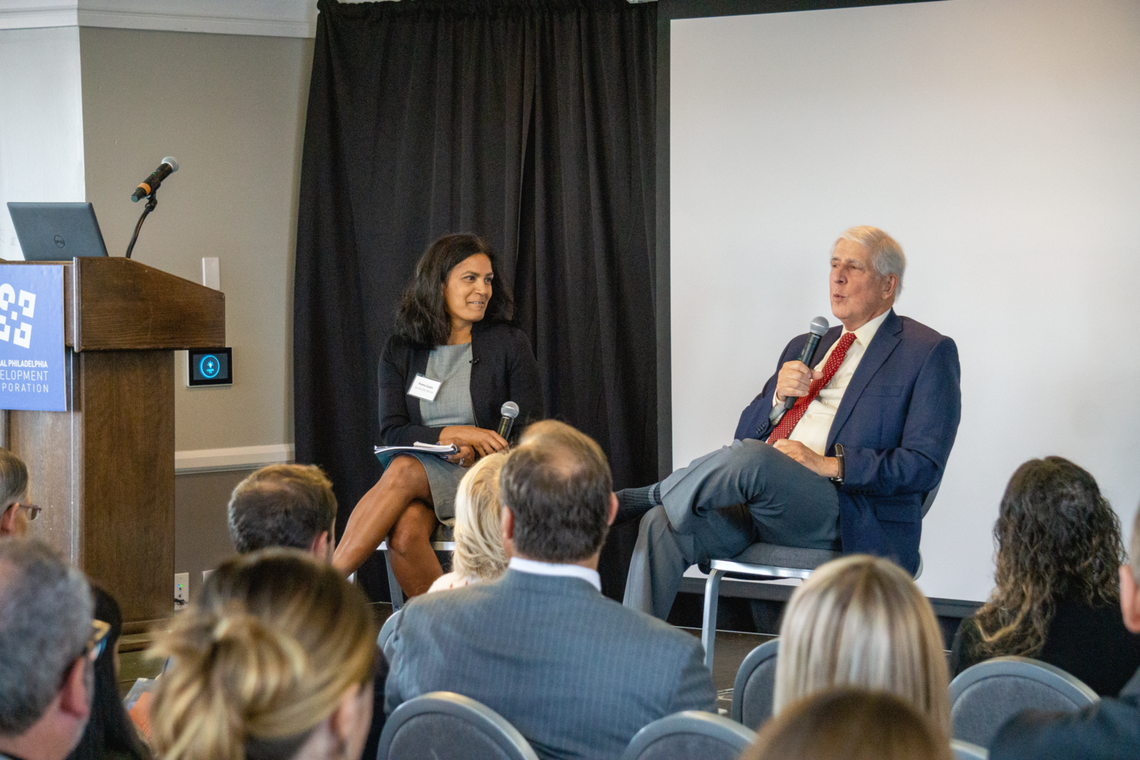
blog
Downtowns Rebound: A Recap of the CPDC October 2023 Meeting
In our groundbreaking new report, Downtowns Rebound: The Data Driven Path to Recovery, the Central Philadelphia Development Corporation (CPDC) and Center City District (CCD) compare benchmarks in recovery across 26 downtowns in the United States.
To provide clarity and insight into the 54-page report, CPDC’s quarterly membership meeting hosted a focused discussion between CCD President & CEO Paul R. Levy and incoming president Prema Katari Gupta around the future of Center City. Read along for some key takeaways from the report, along with additional insights from the intimate interview, and learn about how your organization can join CPDC.
Defining Downtown
Downtowns Rebound is a successor to our 2013 report, Downtown Rebirth: Documenting the Live-Work Dynamic in 21st Century U.S. Cities, published in partnership with the International Downtown Association. That report aimed to standardize the definitions of downtowns, using the then-newly created data-merging and mapping effort Longitudinal Employer-Household Dynamics (LEHD) to map employment nodes in 150 traditional downtowns.

This updated report uses 2020 Census data to examine trends across the 26 downtowns with the largest number of jobs based on 2019 data. Aside from the employment hubs, it also extended to surrounding communities where employees would live in order to provide the fuller picture of a “live-work downtown.”
Through this report, CCD provides data from a national level that individual cities can use in developing their strategy. One key point that’s apparent from the 26 downtowns is that recovery is not consistent across the board. Overall recovery ranged from as low as 69% in San Francisco and Washington, D.C., to 100% in Nashville. Additionally, almost every downtown has had an increase in residential population since 2019, further illustrating the growth of diverse downtowns.
Context around Philadelphia’s Recovery
Despite pessimistic headlines and stories, Center City’s recovery has been more robust than many cities, coming in fifth overall. There are several factors that play into this, including the strength of our mixed-use downtown that focused not only on being an employment center, but also a place for visitors, residents, and workers to experience the arts & culture, shopping, and the restaurant scene. In fact, Philadelphia was found to have the largest share of downtown workers who live within two miles of their place of employment.
What helps Center City’s array of offerings is also its positioning as the region’s transit hub. This has helped it become not only home to 53% of citywide jobs, but also the home to over 2,900 restaurants, retailers, service providers, and other types of businesses. But this benefit is not just for Center City residents and workers; it has been found to benefit the region at-large. For example, small neighborhood businesses, like attorneys, are able to partner with larger firms in this “hub,” helping local communities succeed.

Rethinking Ground Floor Office Spaces
As we think about the different people who work in Center City, it’s important to understand what their motivations are and how they use different spaces. From a worker perspective, it is surprising yet apparent that many of the workers are younger. This can be attributed to several factors, including that young professionals likely live in smaller apartments or shared living situations, the social life benefit to being around coworkers, and, most importantly for businesses, opportunities for mentorship.
As Levy notes, “The younger people who are the folks we need to be mentoring—and the people who inherit a lot of firms—are highly prone to come back, and we need to capitalize on that. And their knowledge is not going to come out of the ether and it's not going to come out of the internet or out of virtual meetings. It's going to come out of watching you in your office, watching how you deal with various things.”

In Center City, this is an area for exploration especially in the West Market Office District, where vacant ground floor spaces offer a new opportunity to reach and engage a new audience. For working professionals with children, childcare is a dilemma that prevents return to office. And while not a traditional opportunity in the ground floor of an office building, it draws the question: could a daycare be a viable use of a first floor retailer?
Right across the river from the office district are several universities, home to college students who cross to Center City for the vibrant arts and culture and restaurant scenes. Are there ways that these ground floor spaces could be transformed into spaces that engage them more than the traditional office worker?
These new opportunities reflect the sustained success of the retail scene in Center City; current data indicates that occupancy is at approximately 84%, a steady increase that slowly approaches 2019 data. But as needs for retailers change—such as the difficulty with getting single retailers to lease larger, multi-floor spaces—so must the downtown that depends on them.
The Job for the Next Mayor
For the next mayor, the data gathered and articulated through this report offers insights into what some of their biggest challenges may be—and a starting block on how to approach them. The discussion focuses on a need to get “back to basics:” clean and safe.
While the Brookings Institution noted that Part 1 crime is down, there’s still a strong misconception around safety in the city due to other quality of life issues to be addressed. This shows the need for not just traditional policing, but for a strategic approach to community policing that blends law enforcement officers with social services, hand-in-hand.

Historically, CCD has led this charge within our boundaries through our community service representatives (CSRs) and Ambassadors of Hope programs, which have helped hundreds of people annually to get the social services they need. A historic success with this was the community court system that brought together the police department, the court system, public health agencies, and the district attorney to help deal with quality of life offenses by offering health and social service support in the same building as courts, while reducing caseloads for the DA, so they could focus on more serious issues.
How You Can Get Involved with CPDC
Interested in hearing the perspectives of other business leaders? Learn how you can become a member of the Central Philadelphia Development Corporation and attend our member-only panels.